
Lake Saint Pierre is a lake in Quebec, Canada, a widening of the Saint Lawrence River between Sorel-Tracy and Trois-Rivières. It is located downstream, and northeast, of Montreal; and upstream, and southwest, of Quebec City. The end of the lake delimits the beginning of the estuary of Saint Lawrence.
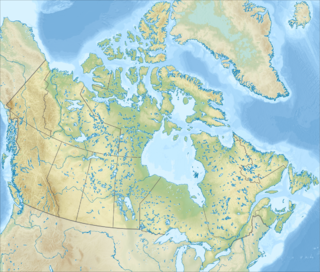
Waterton Lakes National Park is a national park located in the southwest corner of Alberta, Canada. It borders Glacier National Park in Montana, United States. Waterton was the fourth Canadian national park, formed in 1895 and named after Waterton Lake, in turn after the Victorian naturalist and conservationist Charles Waterton. Its range is between the Rocky Mountains and prairies. This park contains 505 km2 (195 sq mi) of rugged mountains and wilderness.
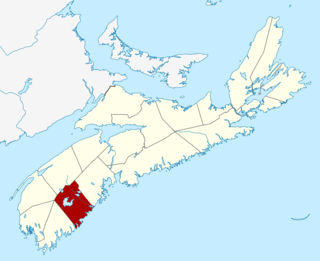
The Region of Queens Municipality is a Canadian regional municipality in southwestern Nova Scotia. It is the northern gateway of the UNESCO Southwest Nova Biosphere Reserve, a centre of outdoor activities. Campgrounds at Kejimukujik National Park and National Historic Site, Thomas H. Raddall Provincial Park, and several other locations offer hiking, biking, canoeing, kayaking, cross-country skiing and snowshoeing. Its seacoast and inland areas are popular photo locations.

Cangas del Narcea is the oldest municipality in the Principality of Asturias in Spain. It is also the largest municipality in Asturias. It is in the southwest of Asturias, on the Asturian border with León. Formerly, Cangas del Narcea was known as Cangas de Tineo . Cangas del Narcea is also the name of the municipality's capital, and one of the judicial districts in Asturias.
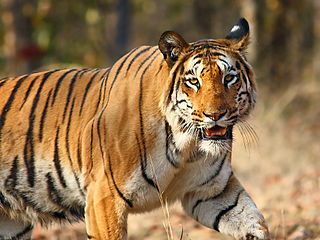
The Indian government has established 18 biosphere reserves to protect larger areas of natural habitat than a typical national park or animal sanctuary, and that often include one or more national parks or preserves, along with buffer zones that are open to some economic uses. Protection is granted not only to the flora and fauna of the protected region, but also to the human communities who inhabit these regions, and their ways of life.

The Desert Biosphere Reserve and Experimental Range is a biosphere reserve and experimental range in western Millard County, Utah, United States, that is listed as a historic district on the National Register of Historic Places.
The Tobeatic Wilderness Area, located in Nova Scotia, Canada, is the largest protected area in the Canadian Maritimes. It is in the south western central part of the province, near Kejimkujik National Park. It was formerly known as the Tobeatic Wildlife Management Area, and the Tobeatic Game Reserve.
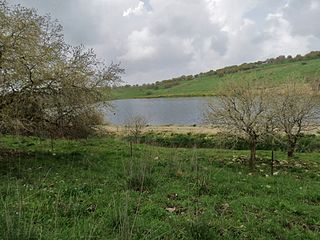
Menashe Heights, called Balad ar-Ruha in Arabic, meaning "Land of Winds", is a geographical region in northern Israel, located on the Carmel Range, between Mount Carmel and Mount Amir/Umm al-Fahm.
Under UNESCO’s Man and the Biosphere Programme, there are 302 biosphere reserves recognized as part of the World Network of Biosphere Reserves in Europe and North America. These are distributed across 36 countries in the region.

The Georgian Bay Littoral is a UNESCO Biosphere Reserve located in Ontario, Canada. The biosphere was the thirteenth in Canada, and covers the Thirty Thousand Islands area of eastern Georgian Bay, one of the world's largest fresh water archipelagos.
The Mersey Tobeatic Research Institute is a non-profit, cooperative research institute that operates a field station located in Queens County, Nova Scotia, between the communities of Kempt and Caledonia, Nova Scotia. It was established in 2004 and has recently undertaken an expansion project. The institute focuses on open research that is shared with the public and focuses on sustainable resource use within the UNESCO designated Southwest Nova Biosphere Reserve.
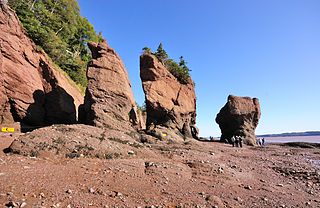
The Fundy Biosphere Reserve is a biosphere reserve next to the upper Bay of Fundy, covering 442,250 hectares in New Brunswick, Canada. The area was designated as such by the United Nations Educational, Scientific and Cultural Organization (UNESCO) in 2007.

The Frontenac Arch Biosphere Reserve is a UNESCO Biosphere Reserve located in Southeastern Ontario, Canada. The biosphere reserve was designated in 2002, and is one of 16 biosphere reserves in Canada. The Frontenac Arch Biosphere operates primarily within a 2,700 km2. region from Brockville to Kingston, extending north to Verona and Perth.
Biosphere reserves are areas comprising terrestrial, marine and coastal ecosystems. The biosphere reserve title is handed over by UNESCO. Each reserve promotes solutions reconciling the conservation of biodiversity with its sustainable use. Biosphere reserves are 'Science for Sustainability support sites' – special places for testing interdisciplinary approaches to understanding and managing changes and interactions between social and ecological systems, including conflict prevention and management of biodiversity. Biosphere reserves are nominated by national governments and remain under the sovereign jurisdiction of the states where they are located. Their status is internationally recognized.

Riding Mountain Biosphere Reserve (RMBR) is a UNESCO World Biosphere Reserve designated by the United Nations Educational, Scientific and Cultural Organization (UNESCO) in 1986 as part of its Man and the Biosphere Programme. The RMBR, which encompasses Riding Mountain National Park and twelve surrounding municipalities in the province of Manitoba, is one of 16 Biosphere Reserves in Canada. Ecologically sensitive ecosystems include the grasslands, deciduous forest and boreal forest. Although grasslands occupy only 7,400 of the total 1,331,800 hectares, they are considered of national importance since they exist as discrete units and the rare climax rough fescue community represents the eastern extent of its range. The Biosphere Reserve extends the protection of these ecosystems outside of park boundaries. Municipalities in the Riding Mountain Biosphere Reserve include Clanwilliam – Erickson, Dauphin, Gilbert Plains, Grandview, Harrison Park, Lakeshore, McCreary, Rosedale, St. Rose, Riding Mountain West, Rossburn, and Yellowhead. First Nations in the Biosphere Reserve include Rolling River First Nation, Keeseekoowenin First Nation, Waywayseecappo First Nation, and Tootinaowaziibeeng First Nation. Asessippi Provincial Park and Duck Mountain Provincial Forest also border the Biosphere Reserve.

The Redberry Lake Biosphere Reserve is a UNESCO Biosphere Reserve covering 112,200 hectares (433 sq mi) in the province of Saskatchewan, southwest Canada. The regional landscape is composed of rolling prairie dotted with seasonal ponds and marshes along with aspen/shrub groves. The core area is Redberry Lake, a saline lake with several islands. There are small patches of natural mixed prairie which are very rare in this highly grazed and cultivated part of the prairies.

Bras d'Or Lake Biosphere Reserve is a UNESCO Biosphere Reserve located at Bras d'Or Lake, Cape Breton Island, Nova Scotia, Canada. It consists of a salt-water estuary watershed inland sea with three passages to the Atlantic Ocean. The Holocene transgression flooded a complex river-lake system of diverse geology, creating the small, deep inland sea with 12 significant watersheds draining both highlands and lowlands.

Mount Arrowsmith Biosphere Region (MABR) is a UNESCO Biosphere Reserve located on the east coast of Vancouver Island in British Columbia, Canada. It was designated in 2000 by UNESCO to protect a large second-growth coast Douglas fir ecosystem in the watersheds of the Little Qualicum and Englishman Rivers from being developed.















